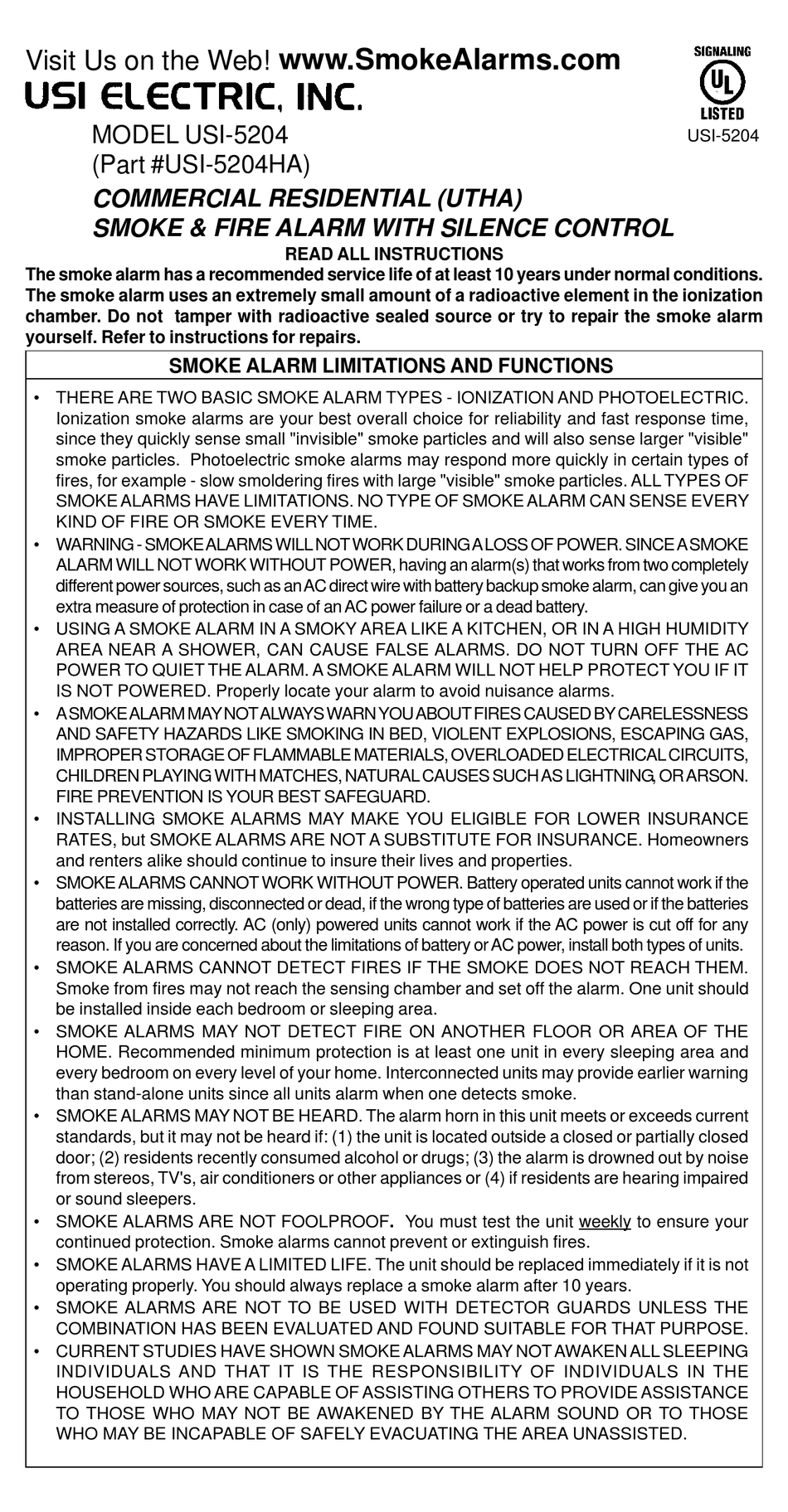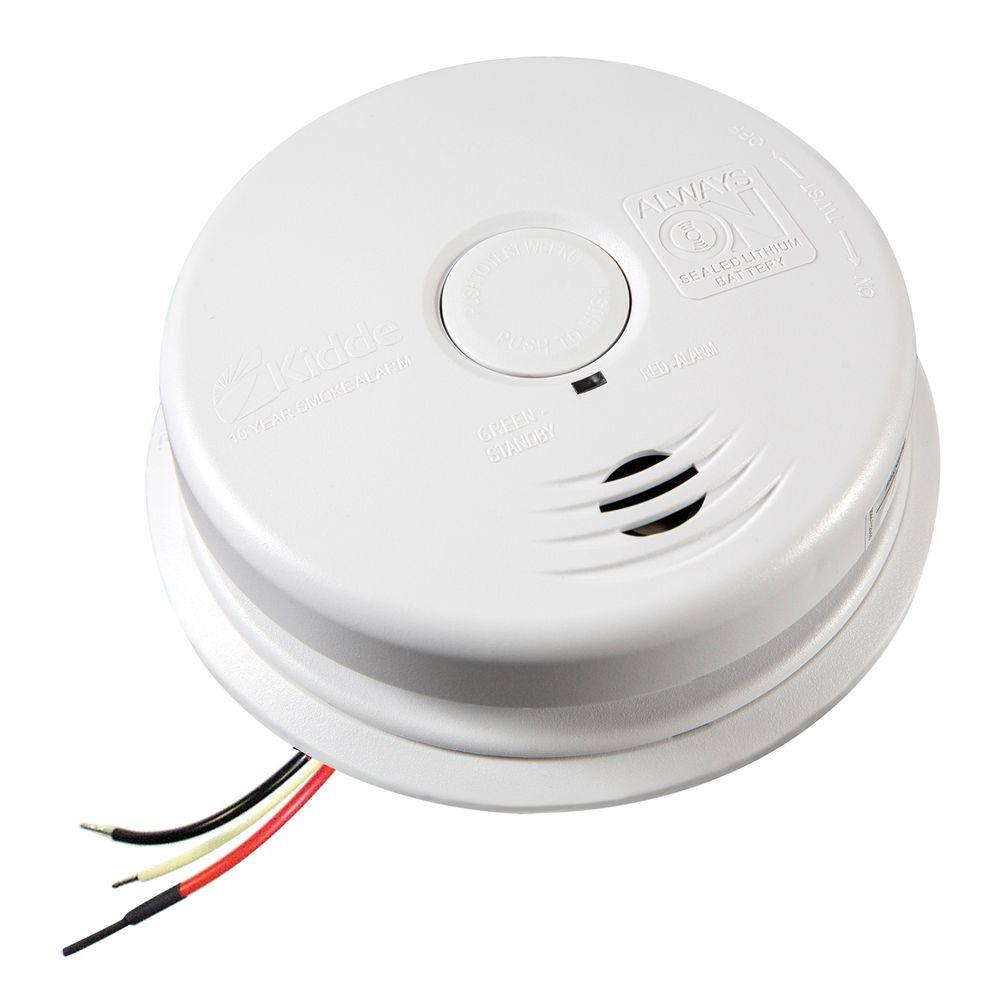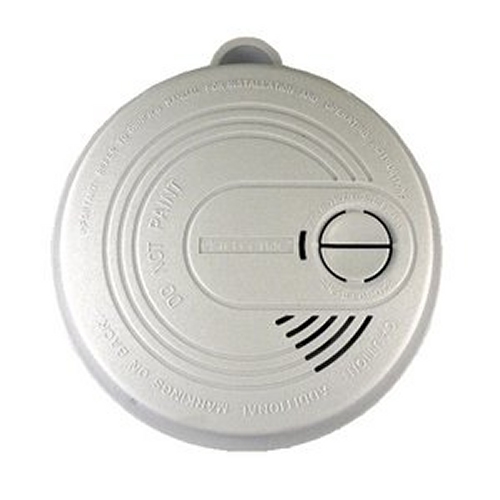
Smoke alarms or smoke detectors mounted on a peaked ceiling shall be located within 36 in. (914 mm) horizontally of the peak, but not closer than 4 in. (102 mm) vertically to the peak. Sloped Ceilings (Shed Ceilings): Smoke alarms or smoke detectors mounted on a. How to Disconnect Smoke Detector Wires. A hard-wired smoke detector in the home draws power from your circuit breaker panel. In contrast, a battery-operated smoke detector will be self-contained. A beeping smoke detector gets on your nerves quickly, but that noisy alarm may be trying to tell you something. Detectors often beep or chirp when something isn't right. The issue could be anything from a dying battery to a malfunction in the alarm's components. It's even more frustrating that you can't always tell which detector is making the sound. Look for a red flashing light to easily.
Smoke alarms are an inexpensive way to help protect your home and family from house fires. They’re not that helpful though if they alarm for no apparent reason. It’s never good to hear that loud screeching alarm, and although we’re thankful when it’s a false alarm, it’s no fun to hear it when you don’t need to.
Tracing down the actual problem can sometimes be time-consuming and it can seem like there isn’t a reason for it to sound. Of course, there’s always a reason for a smoke alarm to go off, but sometimes that reason has nothing to do with detecting smoke. Tracing down the problem isn’t actually that difficult if you know where to look.
So, in this article, we’ll look at several other reasons a smoke alarm can keep going off even though there doesn’t seem to be a reason for it to alarm. Some of these problems will only apply to certain types of smoke alarms. They’re in no particular order.
1. Battery
If the smoke alarm is just chirping rather than sounding the full alarm then it most likely needs new batteries. It’s also possible for the alarm to sound if the battery has a bad connection.
Remove the casing and check the battery’s connection. You might need to unplug and reinstall the battery. If this doesn’t solve the connection issue you might need to replace the fire alarm. It’s a good idea to change the batteries for all of your fire alarms at once so you’re sure they all have fresh batteries.
2. Dust on the Sensors
If the smoke detector has the letter “I” in its model number, or if it mentions radioactive material on the back of the smoke detector, then it’s an ionization smoke detector. It’s possible for an ionization smoke detector to mistake dust for smoke. Dust can reflect the light which can look like smoke particles.
Use a can of compressed air or a vacuum cleaner to remove the dust from the smoke detector’s sensor. Remove the casing and clean around the sensor. Be careful around the sensors and wiring. Keep in mind this process will move the dust around, which can be mistaken for smoke and can set off the alarm.
3. High Humidity
High levels of humidity in the air can sometimes be detected as smoke. The smoke alarm doesn’t always tell the difference between dense moisture content and light smoke particles.
A fan, an open window, or a dehumidifier can help reduce the moisture in the air. If there’s a lot of moisture, then you might need to use a fan along with an open window.
4. Steam
Steam from a hot shower or boiling water on the stove works the same as high humidity and can be detected as light smoke particles.
Use a fan to blow the steam away from the smoke alarm, or an open window to help dissipate the steam. For smoke alarms in the kitchen, you might need a fan in the vent over the stove or a fan pulling the steam to an open window near the stove.
5. Chemical Odors
A strong chemical odor such as from paint fumes, or cleaning chemicals such as ammonia and bug sprays, can cause the smoke alarm to sound. The fire alarm can also detect these chemicals in the air and mistake them for smoke.
Be sure to use chemicals according to their MSDS and use proper ventilation.
6. Insects and Spiders
Insects, spiders, and other little buggy crawly things love the small, dark, hidden spaces in electronics that give off a little bit of heat as they operate. Crawlies especially like fire alarms since they’re on the ceiling where they can live out of the way and uninterrupted. They sometimes crawl into the area with the sensors and set off the alarm.
Clean the smoke detector the same way you would clean for dust. You can keep them away from the smoke alarm with pest control sprays. Be careful not to spray the smoke alarm itself as sprays can damage the electronics. Keep in mind that the chemicals in bug sprays can also set off the alarm.
7. The Smoke Alarm is Malfunctioning
It’s possible that the smoke alarm has simply malfunctioned needs to be replaced. They are built with electronic components. Although electronic components can last for many years, they can degrade over time and with use, causing them to stop working or work incorrectly.
Smoke alarms have a lifespan of around 10 years. For an alarm that’s close to 10 years old or older, or if none of your efforts stop the alarm from going off, it might be time for a replacement.
Replacing Your Smoke Alarm
If you have to replace your smoke alarm then consider getting one that includes two different types of sensors which combine a heat detector with a photoelectric smoke detector. This will widen the range of smoke that can be detected which improves safety and reduces false alarms.
The heat detector has a sensor that detects flames like an ionization detector, but it doesn’t see dust as smoke. This keeps down the false alarms.
A photoelectric smoke detector has a sensor that detects smoldering flames. These flames have a lot of smoke but only a few flames. This type of detector can tell the difference.
Smart smoke detectors provide notifications that show the battery life, connect to your smartphone, and connect with other systems, such as a security system, to provide alerts and the current status when you’re away from home.
Conclusion
Smoke alarms help save thousands of lives every year. A working fire alarm is crucial to the safety of your home. While it is possible for a smoke alarm to give so many false alarms that we’re sometimes tempted to remove the batteries, it’s important that we don’t. Smoke in a home can be a life or death situation. It’s better to troubleshoot and even replace it than not have a smoke alarm.
Safety first- always check for a real fire before assuming that it’s a false alarm.
Smoke detectors are vital for your home. They could save your life if there is ever a fire. In many states, you are legally required to have them in a rental home. It seems like getting rid of a smoke detector should be pretty easy. Turns out it is more complicated than you might think. Many smoke detectors contain a small amount of radiation. Because of this, it is necessary to dispose of them through proper channels rather than placing them in the trash. We have all the information you need on how to recycle smoke detectors. We also have some tips on recycling carbon monoxide detectors, which are increasingly found in American and Canadian homes.
A few facts about smoke detectors
Smoke detectors sense smoke in your home and sound an alarm to let you know. Most of the time they are set off by food that got a bit too crispy in the oven or on the stovetop. But their true purpose is to alert you to smoke from a fire – especially in the middle of the night, when you might not be aware that a fire has started. There are two main types of smoke detectors used in modern homes. The photoelectric smoke detector uses a laser to sense smoke. The ionization chamber smoke detector contains a tiny amount of radioactive material that creates a chemical reaction in a small chamber if smoke enters it. These devices sense smoke more quickly and are the most commonly used type in the United States. It used to be that all smoke detectors were powered by a 9-volt battery. Increasingly, smoke detectors are wired into a home’s electrical system. This makes them more reliable, since you do not have to remember to test the battery. Many smoke detectors still contain a battery, but it is mostly there in case the electrical system stops working. Smoke detectors as we know them today were invented in the late 1930s and early 1940s. Ermst Meili and Walter Jaeger, two Swiss scientists, pooled their knowledge of early smoke detector technology to come up with the first ionization chamber smoke detector. Smoke detectors were not used widely until the 1960s. The old standard for detecting a fire in a building was a heat detector, but scientists showed that smoke detectors worked much better. Now you will find them in almost all homes and businesses.



